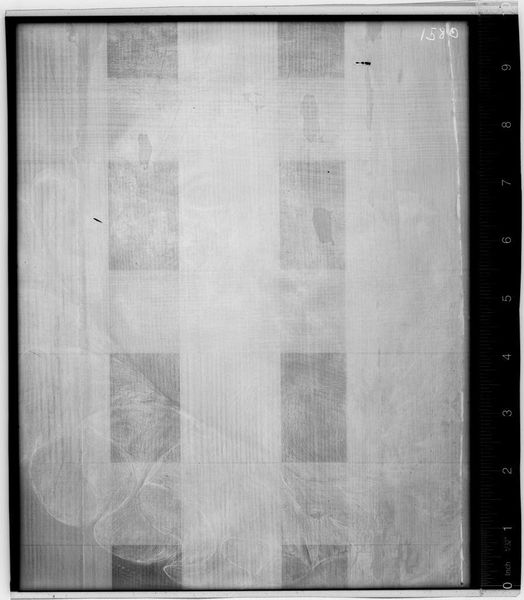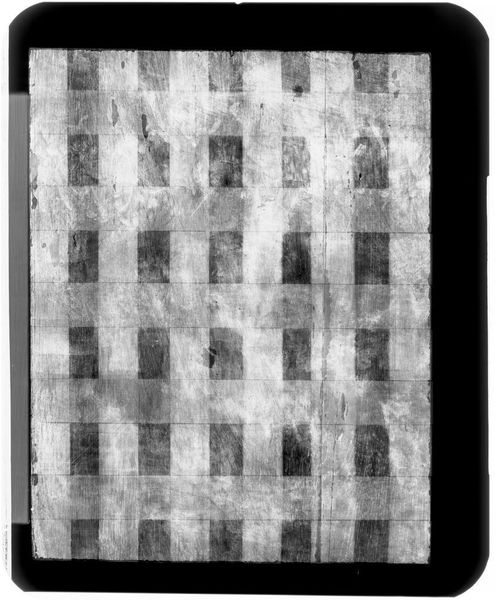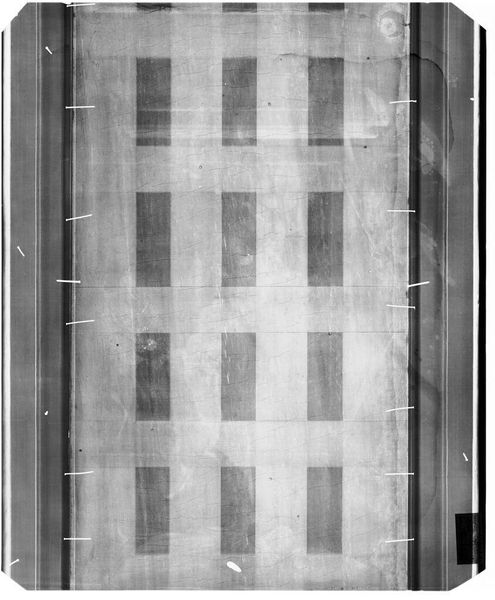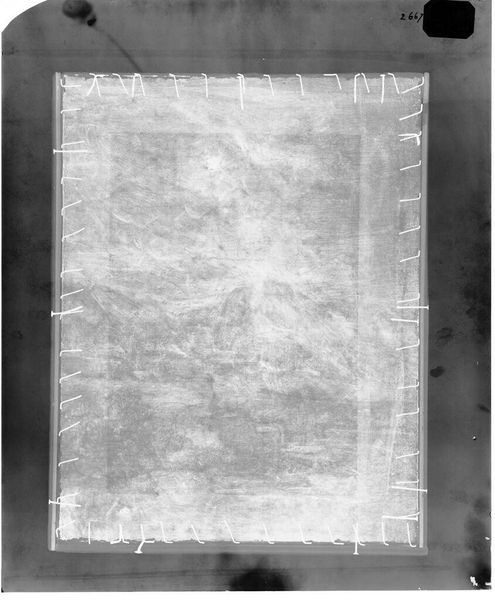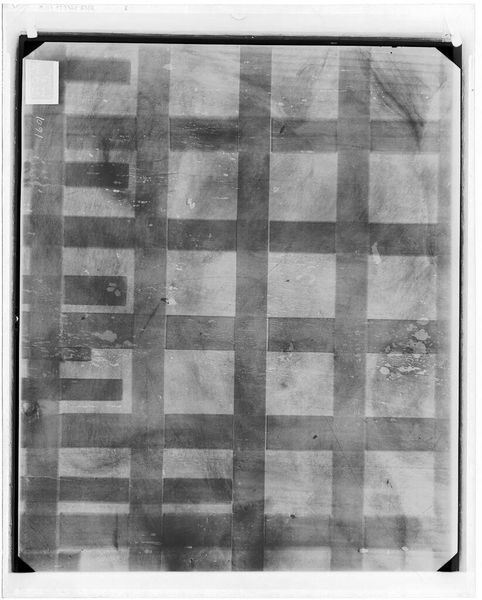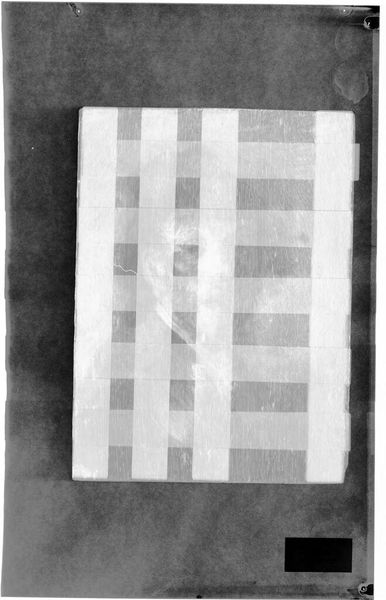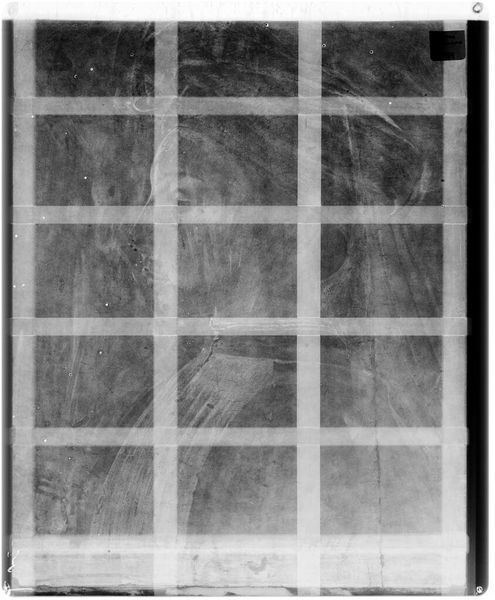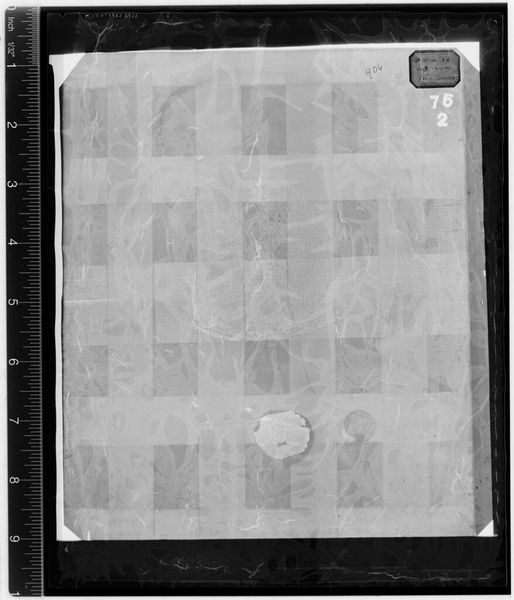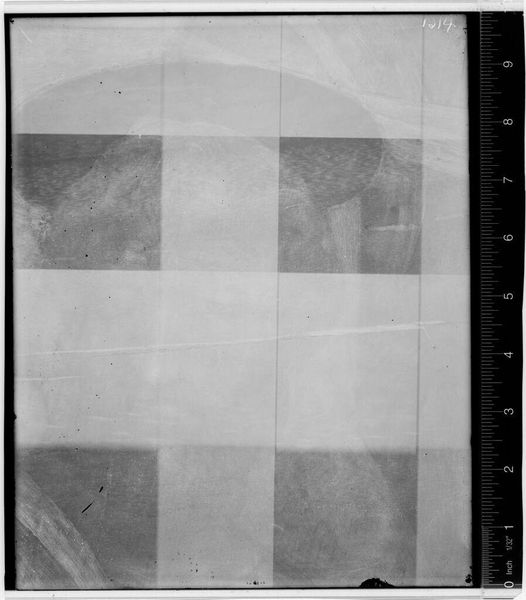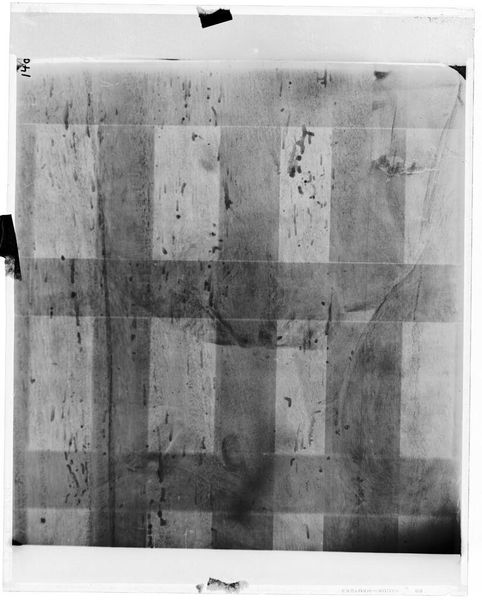
Copyright: CC0 1.0
Curator: Here we have an X-radiograph of "St. Jerome", an artwork by Quentin Metsys, housed at the Harvard Art Museums. It’s like peering into the soul of a painting, isn’t it? Editor: It gives me the impression of something fractured, almost a window into the unseen layers. The grid of squares makes it feel very clinical, almost dehumanizing. Curator: Well, X-radiography allows us to see the underdrawings and pentimenti - the artist's changes – revealing the creative process. It peels back the layers of time and intention. Editor: Interesting. But is that transparency accessible to all? Or does this process simply reinforce a power dynamic, where the art institution literally exposes and controls the narrative of the artwork? Curator: I see your point about accessibility, but the insight is invaluable for conservation efforts, helping to protect the integrity of the original work. Editor: I suppose every tool has its use, and its potential for misuse. Maybe there’s something beautiful about seeing through the surface and acknowledging the complexity within. Curator: Precisely. It also prompts us to question who gets to interpret art, and how we access its many stories. Editor: Yes, even in the bones of a masterpiece, there is a reminder that perspective is key.
Comments
No comments
Be the first to comment and join the conversation on the ultimate creative platform.

